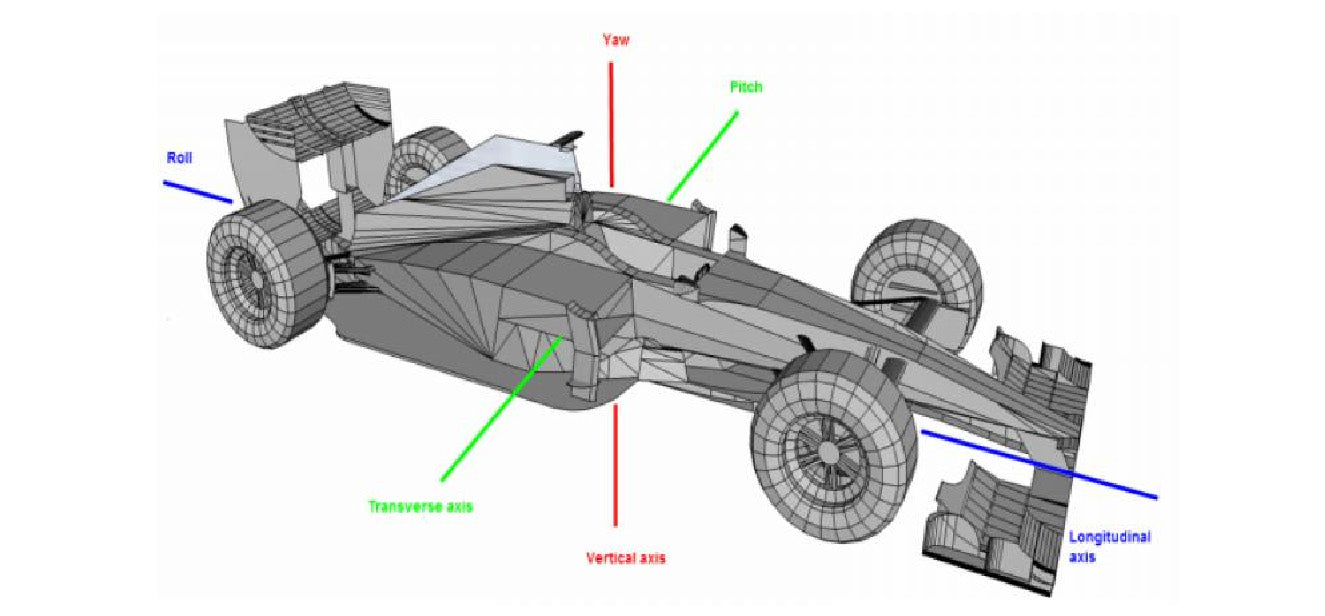Introduction:
Behind every successful sim racer lies a deep understanding of car dynamics. It's the knowledge of how a vehicle behaves under various conditions, and it's the key to making informed decisions on the track. In this guide, we'll explore the fundamental principles of weight transfer, tire grip, and suspension behavior, empowering you to take your virtual racing to the next level.
1. Decoding Weight Transfer:
Weight transfer is a fundamental concept in racing. It refers to the redistribution of a vehicle's weight during acceleration, braking, and cornering. Here's a breakdown:
-
Acceleration: When you accelerate, weight shifts to the rear, pressing down on the rear wheels for traction.
-
Braking: Conversely, during braking, weight shifts forward, enhancing grip on the front wheels and potentially causing rear-wheel lockup.
-
Cornering: In a turn, weight transfers to the outside wheels. This affects grip levels and stability.
2. Mastering Tire Grip:
Tire grip is the foundation of control in sim racing. Understanding the relationship between tire load, friction, and slip is crucial. Key points to consider:
-
Tire Load: The amount of weight pressing down on a tire directly impacts its grip. Heavier loads generate more grip.
-
Friction and Slip Angle: Tires generate the most grip at a specific slip angle, which is the angle between the tire's direction and the direction it's actually moving.
-
Heat Management: Keep an eye on tire temperatures. Overheated tires can lead to reduced grip and diminished performance.
3. Unraveling Suspension Behavior:
The suspension system plays a vital role in how a car handles. It affects stability, responsiveness, and overall performance. Here's what you need to know:
-
Springs and Dampers: Springs control vertical movement, while dampers control the rate at which the suspension compresses and rebounds.
-
Camber and Toe: Adjusting the camber (tilt) and toe (alignment) of the wheels can significantly impact cornering performance.
-
Anti-roll Bars: These components help control body roll during cornering, affecting stability and weight distribution.
4. Applying Knowledge to Driving Decisions:
Understanding car dynamics allows you to make informed decisions on the track. For example:
-
Braking Points: Knowing how weight transfer affects braking helps you find the optimal points to start and finish braking for a turn.
-
Cornering Technique: Understanding tire grip and weight transfer aids in finding the ideal racing line and managing speed through a turn.
-
Suspension Adjustments: Knowing how suspension changes affect car behavior enables you to fine-tune your setup for different tracks and conditions.
5. Consistent Practice and Feedback:
Apply this knowledge in practice sessions. Pay attention to how the car behaves under different circumstances and adjust your driving style accordingly. Use telemetry data and video recordings to analyze your performance and refine your understanding.
Conclusion:
Mastering car dynamics is like peeling back the layers of a complex puzzle in sim racing. It's the key to making calculated, informed decisions on the track. Armed with this knowledge, you'll be better equipped to tackle any circuit, adapt to changing conditions, and ultimately, elevate your performance to new heights. So, dive in, explore, and let the fascinating world of car dynamics enhance your virtual racing experience.



Share:
Mastering Control: The Art of Smooth Braking and Acceleration
Perfecting Heel-and-Toe Downshifting: Seamlessly Shifting Gears for Ultimate Precision